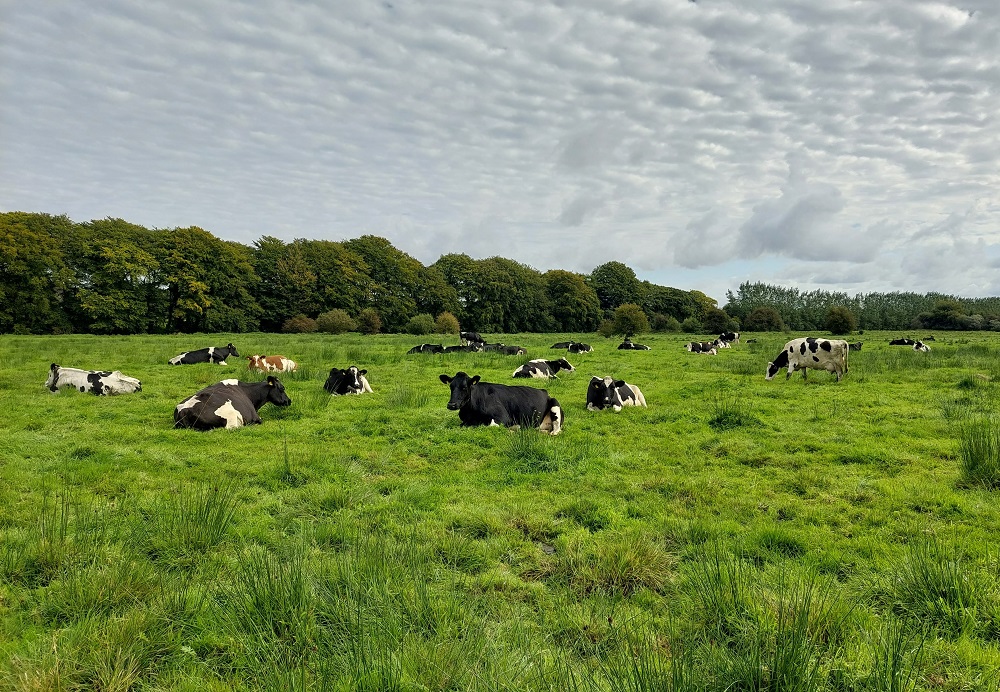FAO: climate mitigation options from livestock agrifood systems

Political leaders, industry workers, activists and academics recently gathered in Dubai, United Arab Emirates, for the UN’s annual climate change conference, COP28. At this important event, the summit focused on reducing the climate footprint of our food systems. Frank Mitloehner, professor in the Department of Animal Science at the University of California, Davis, was one of the key figures who attended the conference. He was also on the ground when the Food and Agriculture Organization of the United Nations, FAO, released its latest report, “Pathways towards lower emissions: a global assessment of the greenhouse gas emissions and mitigation options from livestock agrifood systems“.
Much of the press leading up to COP28 reported that the FAO would call for a reduction in the consumption of animal-source foods in developed regions to limit emissions from our livestock sector. “That doesn’t make sense, and in fact the report does not say that at all”, Mitloehner comments, immediately explaining the real situation: “The global population is climbing rapidly, especially in Africa and other developing regions. Consequently, the demand for food is growing along with it. The report states we can expect about a 20% increase in the demand for animal-source foods by 2050, pushing emissions from livestock production from its present level of 6 gigatons (GT) of CO2eq to 9.1 GT CO2eq if we make no changes in the way in which we produce food”.
We have the power and knowledge to change the trajectory
According to Professor Mitloehner, methane emissions will continue to rise if we do nothing, especially if we see growth in regions where animals are less efficient than in Europe, the United States and other developed nations. “But the good news is that we have the power and knowledge to change the trajectory,” he continues, describing the American context, very similar in this case to the European one: “We can produce nutritious calories with less input and less greenhouse gas emissions. American farmers have been doing it for decades. American growers produce 18% of the world’s beef, with 6% of the global herd. The carbon footprint of a glass of milk is today two-thirds smaller than 70 years ago, and animal herds are at a historic low in the United States without a corresponding decrease in output. It’s a similar story for American swine and poultry. We have improved the outputs while holding inputs steady“.
But more must be done to reduce emissions from livestock production while continuing to feed an unprecedented number of people. “To do this, we need a toolkit of solutions to effectively reduce emissions from animal agriculture. Furthermore, we will need tools that work in different regions, on varying scales and with diverse production systems. After all, this is a global issue“, the UC Davis expert says. “If we reduce herds in developed regions, we’d be losing some of the most efficient animals in the world. The ones that produce more food with less environmental impact. Neither does it make sense to cut back on animal agriculture in developing regions, where the population is growing faster and where nutrition and livelihoods are at stake. Reducing greenhouse gas emissions must be the goal, and we have tools to do that”.
Animal welfare can help in tackling climate change
The FAO report also states that reducing livestock emissions is our greatest opportunity to reduce the climate footprint of animal agriculture. Increasing productivity and focusing on animal welfare are two valuable and proven tools to help us tackle livestock’s global emissions. “That means helping animals produce more with less inputs and ensuring a better quality of life for them“, he adds. “Improving productivity alone could reduce emissions by 30% while improving animal welfare can reduce emissions by double-digit percentages in certain regions. And it doesn’t stop there. We are working on rumen manipulations with feed additives, carbon sequestration, manure management and better nutrition. This work is exciting, promising and ongoing. Scientists worldwide are studying ways to have cows produce less methane so that we can curtail global warming without cutting back on our food supply“.
Sustainable livestock systems can contribute to climate action in several ways
Thanawat Tiensen, Director of the FAO’s Animal Production and Health Division, said in a video: “Sustainable livestock systems can contribute to climate action in several ways. Reducing greenhouse gas emissions, improving resource efficiency, enhancing carbon sequestration and minimizing environmental impacts. Sustainability is imperative, but it is equally essential to recognize the role of livestock in meeting our dietary needs“.
There are huge opportunities to reduce greenhouse gas emissions from livestock globally, which is the goal we must keep in mind: not changing diets or reducing herds, but reducing emissions. The report ends with a subtle call to action: “In conclusion, collaborative efforts from all industry stakeholders are critical to successfully mitigate the anticipated increase in sectoral greenhouse gas emissions. Based on the presently available data, this path appears both viable and effective.” “We need the public and private sectors to step up to support climate solutions in livestock. We have one pathway that can help us do that. Let’s be sure to use it”, Mitloehner concluded.